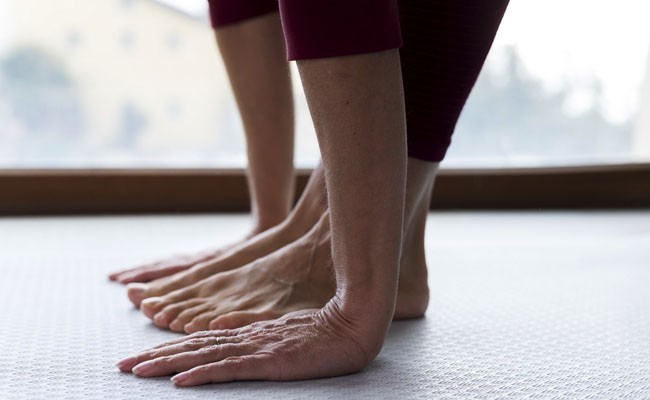
Do I Have Joint Hypermobility? Learn the Beighton Criteria
- 17/06/2025
Ligamentous hypermobility, also known as joint hypermobility, refers to a greater range of motion in the joints than is considered normal. This joint flexibility can be a hereditary characteristic and, although it does not always cause problems, in young adults it can predispose to various musculoskeletal conditions. Hypermobility is often associated with chronic joint pain, muscle fatigue, and increased susceptibility to injuries such as recurrent sprains and joint dislocations. The main cause lies in a hereditary alteration of collagen fibers, which results in reduced strength of the soft tissues of the joint (ligaments, tendons, and capsules). This results in ligaments, tendons, and joint capsules with reduced strength and greater instability.
How Do I Know if I Have Hypermobility?
To identify and quantify joint hypermobility, healthcare professionals use the Beighton Criteria. This simple and noninvasive method assesses joint mobility using a total of 9 points. A score of four or more on these criteria is considered indicative of generalized ligament hypermobility. The Beighton test is the most widely used tool for detecting ligament hypermobility.
The tests that comprise the Beighton Criteria are as follows, and each one adds one point if positive:
- Elbow hyperextension (more than 10°): The examiner positions the subject's arm in extension, looking for hyperextension of more than 10 degrees at the elbow. Both elbows are assessed, adding up to 2 points (1 for each elbow).
- Passive thumb-forearm apposition: With the wrist flexed, the examiner attempts to touch the forearm with the thumb. This test is assessed on both hands, adding up to 2 points (1 for each thumb).
- Passive extension of the fifth finger (little finger) beyond 90°: With the palm of the hand fully resting on a surface, the fifth finger is assessed to see if it can passively extend beyond 90 degrees. This test is assessed on both little fingers, adding up to 2 points (1 for each finger).
- Hyperextension of the knees (10° or more): With the subject lying supine, the examiner assesses whether the knee can extend 10 degrees or beyond normal extension. This test is assessed on both knees, adding up to 2 points (1 for each knee).
- Forward trunk flexion with the palms of the hands touching the floor without bending the knees: The subject must lean forward, trying to place the palms of the hands completely on the floor, keeping the knees fully extended. This is a single test, adding 1 point.
The maximum total score for the Beighton Criteria is 9 points, as four pairs of joints are evaluated (adding 8 points) and a single trunk maneuver (adding 1 point). A score of 4 or more points is considered a positive Beighton score.
Prevalence of Hypermobility: Is It Common in Young Adults?
Joint hypermobility is a relatively common condition that can be found in diverse populations. Its prevalence has been observed to be consistently higher in women than in men. Furthermore, the frequency of hypermobility tends to decrease with age, suggesting a relationship with maturation and the natural strengthening of joint structures.
Symptoms and Complications of Ligament Hypermobility: Beyond Flexibility
Although hypermobility may be asymptomatic, in young adults it can manifest with a variety of symptoms and musculoskeletal complications. Clinical conditions associated with hypermobility include:
- Joint and Muscle Pain: Arthralgia (joint pain), joint effusions, bursitis, and even transient arthritis. Muscle fatigue may arise due to the additional effort exerted by muscles to stabilize loose joints.
- Joint Instability Problems: Increased risk of sprains, especially in the ankles and knees, tendonitis, and episodes of subluxations (partial displacement of the joint) or joint dislocations (complete dislocations).
- Misalignments and postural problems: Such as flat feet, idiopathic scoliosis (abnormal curvature of the spine), pectum excavatum or carinatum (deformities of the rib cage), and dorsolumbargia (pain in the middle and lower back).
- Premature joint wear: Over the long term, instability can contribute to increased cartilage wear, leading to osteoarthritis at earlier ages.
- Associated syndromes: In some cases, hypermobility can be a key sign of more complex connective tissue syndromes, such as Benign Joint Hypermobility Syndrome (BJHS), Ehlers-Danlos Syndrome (hEDS), or Marfan Syndrome.
- Systemic Manifestations: In addition to musculoskeletal problems, hypermobility has been associated with capillary fragility, myopia, a high palate, varicose veins, and certain features such as blepharoptosis (drooping eyelids) and anxiety.
Management and Quality of Life: Overcoming the Challenges of Hypermobility
Understanding the implications of ligamentous hypermobility is crucial for effective management and improving quality of life in young adults. There is no "cure" for hypermobility per se, as it is a constitutional characteristic. However, the focus is on preventing complications and relieving symptoms. A management plan may include:
- Muscle strengthening: Essential to compensate for joint instability and provide greater support and stability to the joints.
- Postural control and ergonomics: Adopting appropriate postures during daily activities and using ergonomic supports can reduce joint overload and prevent pain.
- Physical Therapy: Specific exercise programs, proprioception techniques, and rehabilitation to improve stability, balance, and reduce pain.
- Education and Body Awareness: Learning to be aware of joint limits and avoiding hyperextension or extreme movements that can lead to injury.
- Pain Management: Strategies to manage chronic pain when present.
Early diagnosis and a multidisciplinary approach, which may include rheumatologists, traumatologists, physical therapists, and other specialists, are essential to helping young adults live full and active lives, minimizing the complications associated with joint hypermobility and optimizing their joint health and overall well-being.
Book an appointment with Dr. Jordi Jiménez. He will see you at the center of Palma de Mallorca and help you regain your quality of life.

![[VIDEO] Ultrasound-guided infiltration of the lumbar facets](https://drjordijimenez.com/imagen/100/100/imagenes-pagina/sindrome-facetario-lumbar-drjordijimenez (1).jpg)
![[VIDEO] Ultrasound-guided infiltration of the hip joint](https://drjordijimenez.com/imagen/100/100/Imagenes/valgo-dinamico-rodilla-drjordijimenez.jpg)
